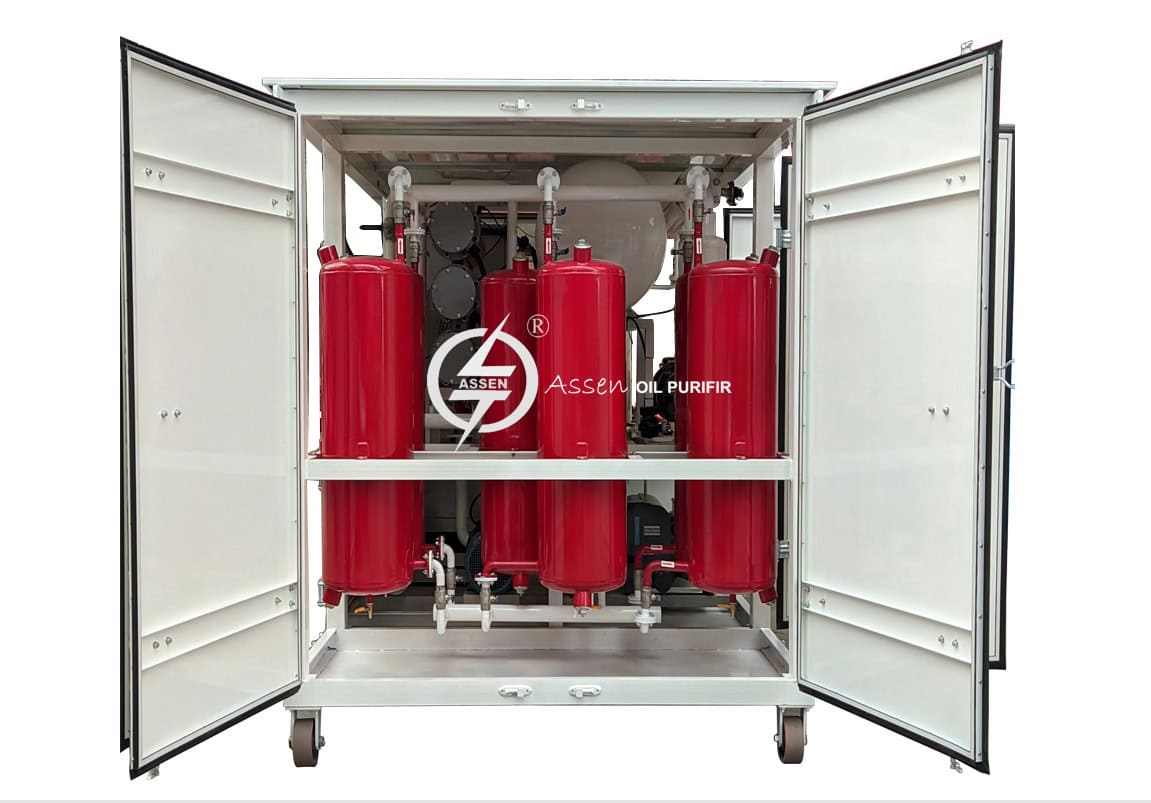Exactly How Regenerated Transformer Oil Prolongs Transformer Lifespan
The function of transformer oil is critical in making sure the dependability and longevity of transformers, serving as both an insulator and coolant. Regenerated transformer oil uses a compelling service to improve these functions by properly getting rid of harmful impurities that endanger efficiency. Through a precise regeneration procedure, the oil's dielectric buildings and thermal stability can be brought back, leading to significant renovations in functional effectiveness. Understanding the ins and outs of this process and its more comprehensive effects for transformer upkeep exposes a path to not just expand life-span however likewise enhance expenses in energy management systems.
Importance of Transformer Oil
Transformer oil plays a vital function in the reliable operation of electrical transformers. It mostly works as a protecting tool, ensuring and preventing electrical discharges that parts run securely under high voltage problems. The oil's dielectric properties are fundamental to keeping the integrity of the transformer, as they reduce the risk of failings that could lead to costly downtimes or catastrophic occurrences.
In enhancement to its insulating abilities, transformer oil likewise functions as a coolant. As transformers run, they create warmth that has to be dissipated to avoid overheating and subsequent damage. The oil flows within the transformer, moving and soaking up warmth away from crucial elements, thereby maintaining ideal operating temperatures.
Additionally, transformer oil functions as an obstacle against wetness and contaminants, which can jeopardize the efficiency and longevity of the transformer. Its chemical residential or commercial properties assist in neutralizing acids and other by-products that might develop with time, adding to the overall health of the electrical system.
Advantages of Regenerated Oil

In addition, regenerated transformer oil has a reduced degree of contaminations, consisting of bits and impurities that can break down efficiency. This pureness not just boosts the oil's thermal conductivity however also extends the functional lifespan of transformers by minimizing overheating risks. The enhanced thermal stability of regenerated oil ensures consistent performance also under high operating temperature levels, which is vital for preserving transformer effectiveness.
An additional advantage is its environmental impact. Regenerated oil advertises sustainability by minimizing waste and the requirement for brand-new oil production, thereby reducing the carbon footprint associated with transformer maintenance. Reclaimed Transformer Oil. The long life of regenerated oil translates to lower maintenance costs over time, as less oil modifications and much less constant tools downtime are required.
Refine of Oil Regrowth
The regrowth of transformer oil includes a methodical procedure developed to bring back the oil's initial residential or commercial properties and improve its efficiency. This process generally starts with the elimination of the utilized oil from the transformer, which is after that subjected to different filtration methods.
The first step in the regeneration process is the purification, where strong pollutants such as sludge, steel, and dirt bits are gotten rid of. This is frequently followed by vacuum cleaner distillation, which aids to get rid of wetness and unpredictable compounds, therefore improving the oil's dielectric toughness.

Effect On Transformer Efficiency
Bring back the residential or commercial properties of regenerated transformer oil dramatically affects the general efficiency of transformers. Improved dielectric toughness is just one of one look what i found of the most important benefits, as it permits for far better insulation and decreases the possibility of electrical malfunction. This renovation results in a more secure operation under high voltage problems, ultimately leading to boosted effectiveness.
Additionally, the removal of pollutants and degradation reference products during the regeneration procedure lessens the threat of overheating. Cleaner oil helps with better warm dissipation, which is crucial for preserving ideal operating temperatures. Therefore, the thermal efficiency of the transformer is boosted, permitting higher tons without jeopardizing dependability.
Furthermore, the chemical security of restored oil ensures prolonged functional life. It resists oxidation and destruction, lowering the regularity of upkeep treatments and oil substitute. This security not only adds to boosted efficiency however additionally straightens with sustainability goals by reducing waste.
Future of Transformer Maintenance
As developments in technology proceed to reshape the landscape of electric engineering, the future of transformer upkeep is positioned for substantial change. The combination of clever modern technologies, such as IoT sensing units and anticipating analytics, makes it possible for real-time tracking of transformer health, enhancing the capacity to preemptively resolve problems before they rise right into significant failures. This aggressive method not just makes the most of functional effectiveness but additionally prolongs the lifespan of transformers.
Furthermore, the application of expert system (AI) in data analysis enables even more precise fault detection and diagnosis. By leveraging artificial intelligence algorithms, upkeep groups can determine patterns in operational information that human experts might ignore, bring about more enlightened decision-making.
Additionally, the adoption of environment-friendly techniques, including using regenerated transformer oil, is established to redefine maintenance protocols. This lasting technique not only decreases ecological influence yet likewise improves the overall health of the transformer.
Finally, the shift in the direction of automation in upkeep processes is expected to streamline operations, reduce downtime, and reduced costs. As these innovations remain to evolve, the future of transformer maintenance will most certainly end up being extra effective, reliable, and sustainable, making certain the stability of important electric framework.
Conclusion
The application of regenerated transformer oil considerably enhances the operational long life of transformers. Eventually, the fostering of regrowed oil stands for a crucial advancement in transformer upkeep, guaranteeing optimum performance and sustainability in the administration of electrical facilities.
The role of transformer oil is essential in making sure the integrity and news durability of transformers, offering as both an insulator and coolant.Transformer oil plays a crucial duty in the effective operation of electrical transformers. Regrowed oil promotes sustainability by decreasing waste and the requirement for brand-new oil production, thus decreasing the carbon footprint associated with transformer upkeep.Restoring the homes of regenerated transformer oil substantially influences the overall performance of transformers.The use of regenerated transformer oil substantially boosts the functional durability of transformers.